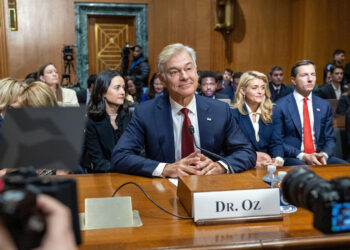TOPLINE:
Serum uric acid (SUA) levels independently predict nonalcoholic fatty liver disease (NAFLD, now known as metabolic dysfunction–associated steatotic liver disease) in young adults without obesity, with elevated levels — even within normal ranges — associated with increasing risk.
METHODOLOGY:
- SUA is a potentially useful diagnostic predictor of NAFLD, the prevalence of which is increasing worldwide, including among individuals without obesity.
- Researchers conducted a community-based prospective cohort study to assess the association between SUA levels and the risk for NAFLD in young adults (
- Fasting SUA levels were assessed at baseline, with participants divided into four groups on the basis of quartiles ranging from lowest (
- Outcomes were determined using fasting abdominal ultrasound images, with follow-up conducted every 2 years.
TAKEAWAY:
- Researchers analyzed 10,938 individuals (mean age, 36.02 years; 59.34% men; mean body mass index, 22.22), with 4835 (44.2%) diagnosed with NAFLD over a median follow-up of 9.95 years.
- Compared with those in the lowest quartile of SUA levels (Q1), those in the higher quartiles had sequentially elevated risks for NAFLD (Q2: adjusted hazard ratio [HR], 1.095; P = .0383; Q3: HR, 1.196; P P
- After correcting for all confounding factors, SUA levels showed a nonlinear association with the risk for NAFLD (P
- In the highest quartile of SUA levels, the risk for NAFLD was notably higher in men vs women, in those with abdominal obesity vs nonabdominal obesity, and in those with high-sensitivity C-reactive protein levels > 3 mg/L vs ≤ 3 mg/L.
IN PRACTICE:
“The increase of SUA within the physiological range, even if it doesn’t reach the level of hyperuricemia, will impose a significant burden on the occurrence of NAFLD,” the authors wrote. “Therefore, further research is needed to determine at what level SUA should be ultimately controlled to be beneficial to the human body.”
SOURCE:
The study, led by Yunpeng Li and Xiangming Ma, Graduate School of North China University of Science and Technology, Tangshan, China, was published online in Digestive Diseases and Sciences.
LIMITATIONS:
The study was conducted in a single region of mainland China, which may have affected its generalizability. Only the initial SUA levels and baseline information were analyzed, without accounting for the dynamic changes in these parameters during the follow-up period.
DISCLOSURES:
The authors reported no funding support for this study and declared no competing interests.
This article was created using several editorial tools, including AI, as part of the process. Human editors reviewed this content before publication.
Source link : https://www.medscape.com/viewarticle/serum-uric-acid-levels-predict-nafld-risk-nonobese-young-2025a1000146?src=rss
Author :
Publish date : 2025-01-17 05:10:08
Copyright for syndicated content belongs to the linked Source.














